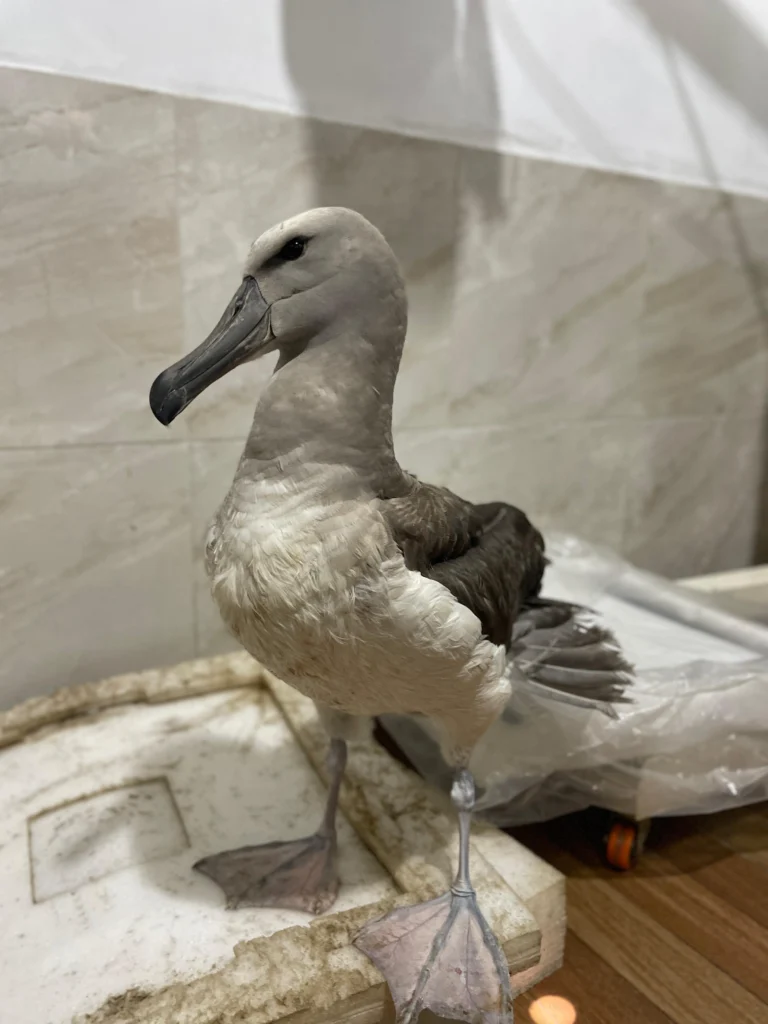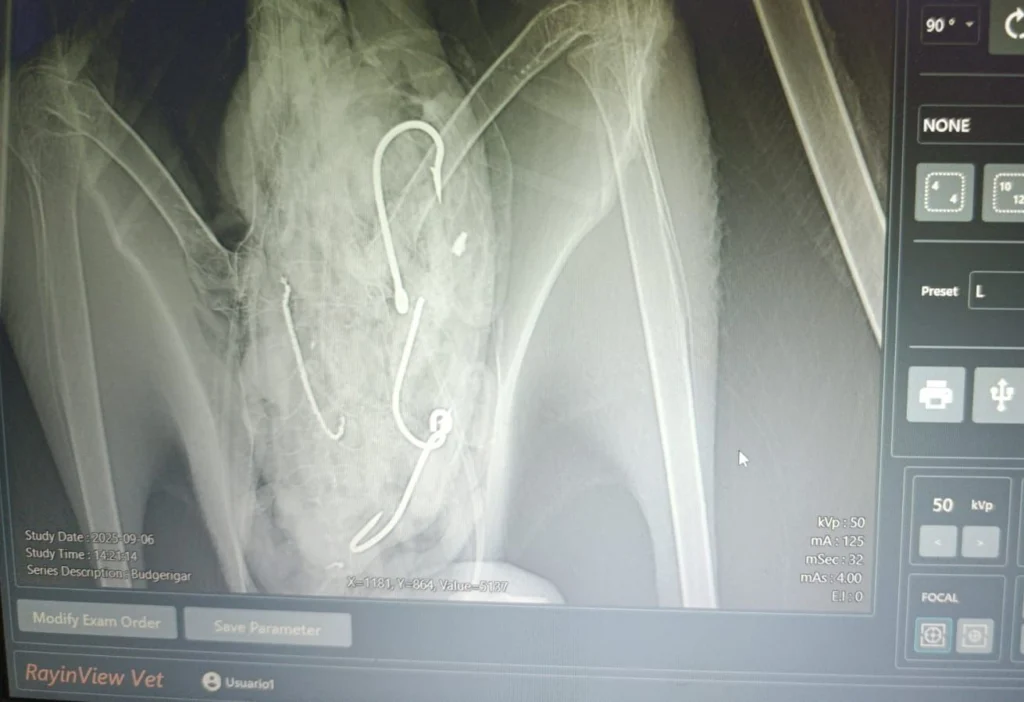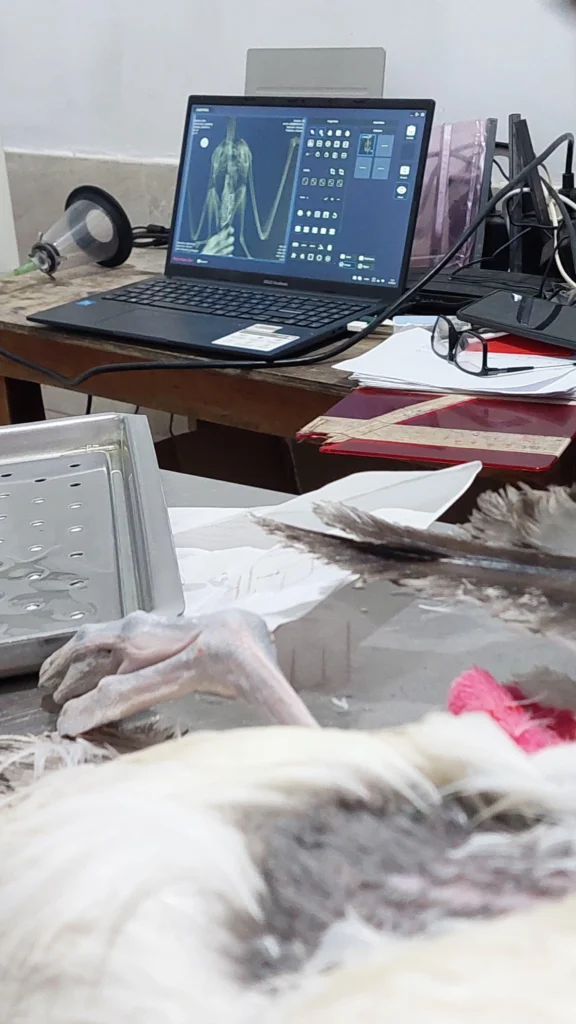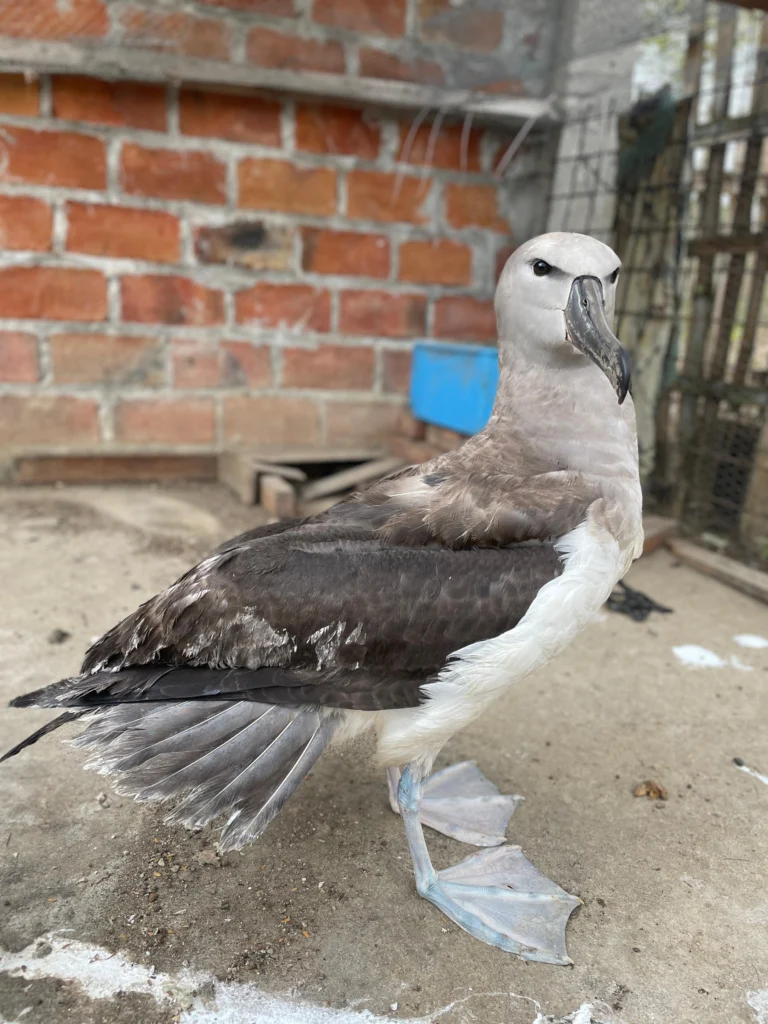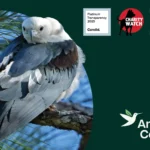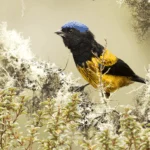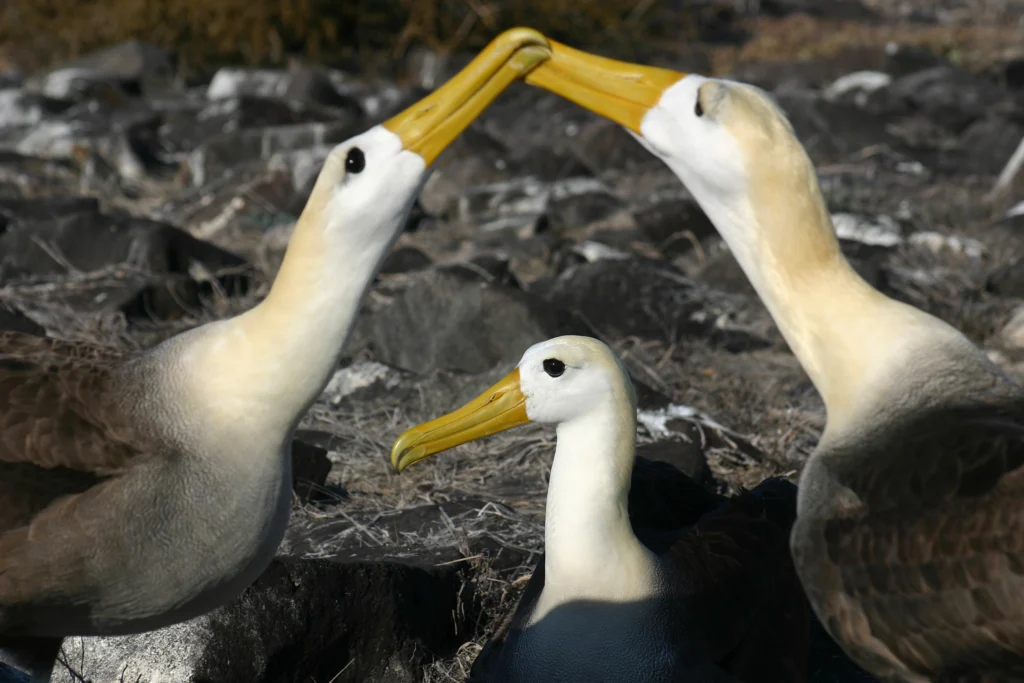A Salvin’s Albatross, one of the least studied seabird species in the world, has returned to the wild after it successfully recovered from life-saving surgery that removed four large fishing hooks and the fishing line it ingested off the coast of South America. This latest unintended fisheries incident highlights the global risk of bycatch — the accidental capture of nontarget marine wildlife by fisheries — and the importance of actions taken by commercial and artisanal fisheries to address threats to seabirds.
The juvenile Salvin’s Albatross was found by Juan Alberto Infante, a fisherman from Anconcito, Ecuador, who recognized that the bird was unwell and contacted local authorities. The albatross was under wildlife rehabilitation care in Puerto López after the ingested hooks and fishing line were successfully removed by Ruben Aleman, a local veterinarian with Fundación Juvimar. After careful evaluation, it was released in late October on a nearby beach in Manabí province.
“Thanks to the timely report from an artisanal fisher, we were able to rescue this Salvin’s Albatross that had been grounded for several days in the port of Anconcito,” said Giovanny Suárez Espín, Ecuador Seabird Bycatch Coordinator for American Bird Conservancy (ABC).
